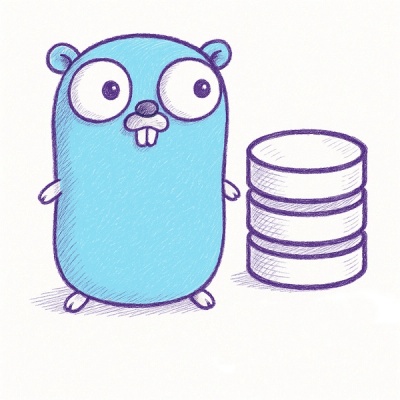
Security News
Official Go SDK for MCP in Development, Stable Release Expected in August
The official Go SDK for the Model Context Protocol is in development, with a stable, production-ready release expected by August 2025.
ember-bootstrap-switch
Advanced tools
An ember-cli addon to import bootstrap-switch and provide an Ember component.
This addon has been deprecated due to fact that bootstrap-switch has had no active development recently.
This ember-cli addon integrates the bootstrap-switch plugin with your project. It imports the required bootstrap-switch files into your build but does NOT import the other, core bootstrap files and theme. Use another addon to get your project started with bootstrap, such as ember-cli-bootswatch.
Then easily use bootstrap-switch in your templates with the included Ember
Component, documentation below. All of the
bootstrap-switch options are
exposed in the Component, which is easily customizable and robust. Most common,
simple example: {{bs-switch checked=boundProperty}}
This addon works with ember and ember-cli 1.13+ (including 2.x). For use with older versions of ember, use version 0.2.0 of this addon.
From within your ember-cli project, run the following to install this npm package and the bower dependency for bootstrap-switch:
# ember-cli 1.13 or higher
ember install ember-bootstrap-switch
Most of the configuration options are set directly on the bootstrap-switch Component. However, there are a couple addon configurations that can be changed.
Options for this addon are configured in the projects ember-cli-build.js file
as an 'ember-bootstrap-switch' object property. Available options include:
bootstrapVersion [2|3]: By default 3, the major bootstrap version used in your projectexcludeCSS [boolean]: By default, the bootstrap-switch.css file will be importedexcludeJS [boolean]: By default, the bootstrap-switch.js file will be importedbootstrap-switch includes Less files which you can use with your project instead of using the default CSS files. Typically you wouldn't do this unless you are already using ember-cli-less elsewhere in your project. You'll need to exclude the default CSS files, include the bower path, and finally import the Less files. Ex:
// ember-cli-build.js
/* global require, module */
var EmberApp = require('ember-cli/lib/broccoli/ember-app');
module.exports = function(defaults) {
var app = new EmberApp(defaults, {
// Add options here
"ember-bootstrap-switch": {
excludeCSS: true
},
lessOptions: {
paths: [
"bower_components/bootstrap/less",
"bower_components/bootstrap-switch/src/less/bootstrap3"
]
}
});
// ... (documentation snipped)
return app.toTree();
};
// app/styles/app.less
@import "bootstrap";
@import "bootstrap-switch";
You can adjust the version of bootstrap-switch imported by having bower install
a different version. Ex:
bower install --save bootstrap-switch#1.8.0
As mentioned in the bootstrap-switch documentation,
you can change the global defaults that bootstrap-switch uses. Simply create a
new Ember Initializer, ember g initializer bootstrap-switch-defaults, and
define them on Ember's alias for jQuery.
Be sure to import Ember, as the generated initializer code does not do so. Ex:
// app/initializers/bootstrap-switch-defaults.js
import Ember from 'ember';
export function initialize(/* container, application */) {
Ember.$.fn.bootstrapSwitch.defaults.onColor = 'success';
Ember.$.fn.bootstrapSwitch.defaults.onText = 'Yes';
Ember.$.fn.bootstrapSwitch.defaults.offText = 'No';
}
export default {
name: 'bootstrap-switch-defaults',
initialize: initialize
};
This addon includes a Component that will properly use the bootstrap-switch plugin.
There are two names that you can use, {{bootstrap-switch}} or {{bs-switch}}.
Both point to the same Component so it is your preference which to use.
The Component has many attributes that can be modified, including all of the
bootstrap-switch options.
All options may be bound properties and will properly update the switch when
changed. But most of the time you'll only bind the checked property and set
the others as attribute strings with your preference,
{{bs-switch checked=switchState on-text="Yes" off-text="No"}}.
Native HTML attributes will be applied to the DOM element as typically expected. However, bootstrap-switch options are passed in the options hash when initializing. Any subsequent option updates will be applied to bootstrap-switch using its "set" method.
| Component Attribute | Bootstrap Switch Option | Native <input> Attribute | Notes |
|---|---|---|---|
| animate | animate | Whether the switch animates between states | |
| autofocus | Yes | Should probably be handled elsewhere in Ember | |
| base-class | baseClass | ||
| checked | state | NOT the native HTML checked attr | |
| disabled | disabled | Yes | |
| form | Yes | ||
| formnovalidate | Yes | ||
| handle-width | handleWidth | Width of the entire switch | |
| indeterminate | indeterminate | Places the switch "in the middle", between on/off | |
| inverse | inverse | Reverses what side the on/off labels are on | |
| label-text | labelText | Text in between the on/off labels | |
| label-width | labelWidth | Space between the on/off labels | |
| name | Yes | Required for radios | |
| off-color | offColor | Bootstrap contextual color name (primary, success, info, warning, danger) | |
| off-text | offText | ||
| on-color | onColor | Bootstrap contextual color name (primary, success, info, warning, danger) | |
| on-destroy | Action sent on component destruction | ||
| on-init | onInit | Action sent on switch init | |
| on-switch-active | Action sent when the state is true (see usage below) | ||
| on-switch-change | onSwitchChange | Action sent on switch change | |
| on-text | onText | ||
| radio-all-off | radioAllOff | When used as radios, can they all be unchecked | |
| readonly | readonly | Yes | |
| required | Yes | ||
| size | size | Bootstrap contextual button size name (lg, sm, xs) | |
| tabindex | Yes | ||
| type | Yes | Either 'checkbox' or 'radio' | |
| value | Yes | Useful when used as radios | |
| wrapper-class | wrapperClass |
Note: Boolean strings will be properly interpreted as a boolean. Ex: "false"
Warning: Do not use the bootstrap-switch 'state' as a property. Ember internals will throw a warning.
The 'indeterminate' option by default reads the 'checked' property and if
undefined or null will return true, setting the switch to an indeterminate
state (between on/off labels). This is helpful when passing a Promise in as the
'checked' attribute, the switch will be "indeterminate" until the Promise resolves.
To override this functionality, simply define the attribute:
{{bs-switch indeterminate="false"}}
The Component also captures bootstrap-switch events
and triggers them as Ember actions. Ex: {{bs-switch checked="true" on-switch-change="handleChange"}}
Depending on the event/action, your function signature differs (below). Each action handler has access
to the Component, which you can manipulate as needed, including:
function(component) {
component; // Ember Component
component.element; // Native DOM Element
component.$(); // jQuery Element
component.$().bootstrapSwitch(); // Direct access to the bootstrap-switch plugin
}
Note: You cannot component.set('option-name', 'option-value') since all option changes are handled through the new attribute hooks. Use component.$().bootstrapSwitch('option-name', 'option-value') instead if needed.
Fires when the bootstrap-switch triggers its 'init' event. This is NOT the Ember Component 'init' nor 'didInsertElement' events, but will occur very soon after since that's when bootstrap-switch is created.
function(component, event){
// your code
}
Fires when the bootstrap-switch triggers its 'switchChange' event. The Component also reacts to this by changing the 'checked' state. The 'state' argument will be a boolean, which reflects the new state.
Note: The signature changed between version 0.2.0 and 1.13.0, state was moved to the first position.
function(state, component, event){
// your code
}
Fires when the bootstrap-switch triggers its 'switchChange' event
and the new state is true. The difference between this action and
'on-switch-change' is that the value is passed as the first argument.
This is useful when used as radios, to easily get the "active" value.
See the radio example below.
function(value, component, event){
// your code
}
Fires on the Ember Components 'willDestroyElement' event. The bootstrap-switch plugin does not have a destroy event to watch. However, you can access the plugin as mentioned above before bootstrap-switch is actually destroyed.
function(component){
// your code
}
All bootstrap-switch toggle methods
are exposed as actions on the component. You will first need access to the component
instance, which can be captured via the on-init event handler (example below),
or any other handlers mentioned above. Available actions:
// app/controllers/foobar.js
import Ember from 'ember';
export default Ember.Controller.extend({
switch: undefined,
actions: {
registerSwitch( component ){
this.set('switch', component);
},
toggleSwitch(){
this.get('switch').send('toggleState');
}
}
});
{{!-- app/templates/foobar.js --}}
{{bs-switch on-init="registerSwitch"}}
<button {{action "toggleSwitch"}}>Toggle</button>
Although not required, you can .extend() the Component to change the way it
works, such as setting defaults other than bootstrap-switch options. Simply
create a new Component in your app and extend the addon's Component. You can
either override the existing name, ember g component bs-switch, or use your
own name, ember g component my-switch. Then import the Component from the
addon, and export your extended version. Ex:
// app/components/my-switch.js
import BootstrapSwitchComponent from 'ember-bootstrap-switch/components/bootstrap-switch';
export default BootstrapSwitchComponent.extend({
// your changes here
// look at the source code for details
});
When used as an angle bracket component (once it lands in Ember), one-way data binding
is enabled by default. That means the 'checked' property you pass in will not update
automatically. There are two ways to handle this, re-enable two-way binding by using the
mut helper or handle the change yourself using the 'on-switch-change' action.
// app/controllers/foobar.js
import Ember from 'ember';
export default Ember.Controller.extend({
checkedState: true,
actions: {
switchChanged(state){
this.set('checkedState', state);
}
}
});
{{!-- app/templates/foobar.js --}}
<bs-switch checked={{mut checkedState}} />
<bs-switch checked={{checkedState}} on-switch-change={{action 'switchChanged'}} />
There are a couple issues with using bootstrap-switch as radios that affects usage in Ember. The 'switchChange' event currently only fires on the radio/switch that is clicked. Although helpful, the other radios/switches do not know about the change in state, so 'checked' bindings will not be updated in Ember.
Currently the best way to use bootstrap-switch as radios is to use values to determine the active radio. Using a couple Helpers and computed properties, you can easily
// app/controllers/foobar.js
import Ember from 'ember';
export default Ember.Controller.extend({
radioValue: null,
fooASelected: Ember.computed.equals('radioValue', 'fooA'),
fooBSelected: Ember.computed.equals('radioValue', 'fooB'),
fooCSelected: Ember.computed.equals('radioValue', 'fooC')
});
{{!-- app/templates/foobar.js --}}
{{bs-switch name="foo" value="fooA" checked=(readonly fooASelected) on-switch-active=(mut radioValue)}}
{{bs-switch name="foo" value="fooB" checked=(readonly fooBSelected) on-switch-active=(mut radioValue)}}
{{bs-switch name="foo" value="fooC" checked=(readonly fooCSelected) on-switch-active=(mut radioValue)}}
Or, using the ember-truth-helpers,
you only need radioValue and use the eq helper to determine checked state.
{{!-- app/templates/foobar.js --}}
{{bs-switch name="foo" value="fooA" checked=(eq radioValue "fooA") on-switch-active=(mut radioValue)}}
{{bs-switch name="foo" value="fooB" checked=(eq radioValue "fooB") on-switch-active=(mut radioValue)}}
{{bs-switch name="foo" value="fooC" checked=(eq radioValue "fooC") on-switch-active=(mut radioValue)}}
In addition to the radio issues mentioned above, if used with the 'radio-all-off' option,
the above radio examples will not work properly when all radios are "off". To fix this,
you'll need to handle the radioValue state manually using the 'on-switch-change' action.
// app/controllers/foobar.js
import Ember from 'ember';
export default Ember.Controller.extend({
radioValue: null,
actions: {
switchChanged( state, component ){
// 'state' will typically always be `true`,
// unless the 'radio-all-off' option is `true`
const newValue = (state ? component.get('value') : null);
this.set('radioValue', newValue);
}
}
});
{{!-- app/templates/foobar.js --}}
{{bs-switch name="foo" value="fooA" checked=(eq radioValue "fooA") on-switch-change="switchChanged" radio-all-off=true}}
{{bs-switch name="foo" value="fooB" checked=(eq radioValue "fooB") on-switch-change="switchChanged" radio-all-off=true}}
{{bs-switch name="foo" value="fooC" checked=(eq radioValue "fooC") on-switch-change="switchChanged" radio-all-off=true}}
This documentation will be updated once the bootstrap-switch radio issues are fixed.
FAQs
An ember-cli addon to import bootstrap-switch and provide an Ember component.
We found that ember-bootstrap-switch demonstrated a not healthy version release cadence and project activity because the last version was released a year ago. It has 1 open source maintainer collaborating on the project.
Did you know?

Socket for GitHub automatically highlights issues in each pull request and monitors the health of all your open source dependencies. Discover the contents of your packages and block harmful activity before you install or update your dependencies.

Security News
The official Go SDK for the Model Context Protocol is in development, with a stable, production-ready release expected by August 2025.

Security News
New research reveals that LLMs often fake understanding, passing benchmarks but failing to apply concepts or stay internally consistent.

Security News
Django has updated its security policies to reject AI-generated vulnerability reports that include fabricated or unverifiable content.